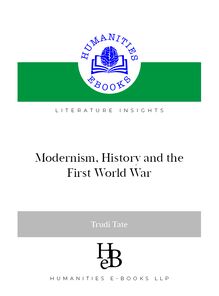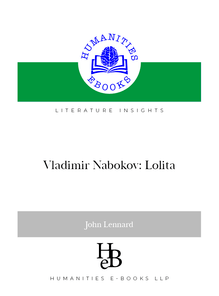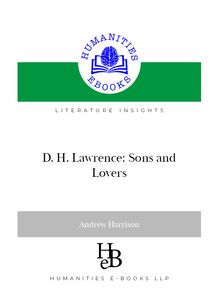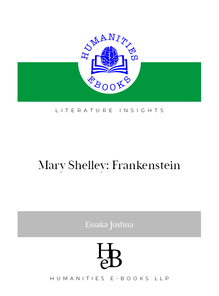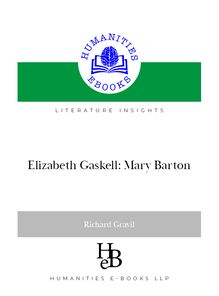-
 Univers
Univers
-
 Ebooks
Ebooks
-
 Livres audio
Livres audio
-
 Presse
Presse
-
 Podcasts
Podcasts
-
 BD
BD
-
 Documents
Documents
-
- Cours
- Révisions
- Ressources pédagogiques
- Sciences de l’éducation
- Manuels scolaires
- Langues
- Travaux de classe
- Annales de BEP
- Etudes supérieures
- Maternelle et primaire
- Fiches de lecture
- Orientation scolaire
- Méthodologie
- Corrigés de devoir
- Annales d’examens et concours
- Annales du bac
- Annales du brevet
- Rapports de stage
La lecture à portée de main
82 pages
English
Découvre YouScribe en t'inscrivant gratuitement
Je m'inscrisDécouvre YouScribe en t'inscrivant gratuitement
Je m'inscris
Obtenez un accès à la bibliothèque pour le consulter en ligne
En savoir plus
En savoir plus
82 pages
English
Obtenez un accès à la bibliothèque pour le consulter en ligne
En savoir plus
En savoir plus

Description
Stephen Siddall's study of one of Ibsen's most innovative plays places it firmly in the context of nineteenth century European theatre,' novelty theatre', and the society of Norway of its time.
Sujets
Informations
| Publié par | Humanities eBooks |
| Date de parution | 11 janvier 2021 |
| Nombre de lectures | 0 |
| EAN13 | 9781847600592 |
| Langue | English |
Informations légales : prix de location à la page 0,0250€. Cette information est donnée uniquement à titre indicatif conformément à la législation en vigueur.
Extrait
Literature Insights General Editor: Charles Moseley
RUNNiNG HEàD 1
HENriK IBsEN: A Doll’s House
S. H. SiDDàLL ‘‘Ibsen seemed to belong … to another world” http//www.humanities-ebooks.co.uk FoRadvIceonuSeoFtHISebookpleaSeScRolltopage2
publIcatIondata
© S. H. SiDDàLL, 2008
The Author has asserted his right to be identiîed as the author of this Work iN àCCOrDàNCE wiTh ThE cOPyriGhT, dEsiGNs àND pàTENTs aCT 1988.
pUBLishED By HUMàNiTiEs-eBOOKs llp tirriL HàLL, tirriL, pENriTh ca10 2Je
ReadIngoptIonS
*To use the navigation tools, the search facility, and other features of the toolbar, this Ebook should be read in default view. *tO NàViGàTE ThrOUGh ThE CONTENTs UsE ThE hyPErLiNKED ‘bOOKMàrKs’ àT the left of the screen. *To search, expand the search column at the right of the screen or click ON ThE BiNOCULàr syMBOL iN ThE TOOLBàr. *For ease of reading, use <CTRL+L> to enlarge the page to full screen *Use <Esc> to return to the full menu. *Hyperlinks appear in Blue Underlined Text. To return from an internal hyperlink use the ‘previous view’ button (more than once if need be). *For a computer generated reading use <View>Read out loud> lIcenceandpeRmISSIonS
pUrChàsiNG This BOOK LiCENsEs yOU TO rEàD This wOrK ON-sCrEEN àND TO PriNT one copy for your own use. Copy and paste functions are disabled. No part of this publication may be otherwise reproduced or transmitted or distributed without the prior written permission of both the copyright owner and the pub-lisher. Making or distributing copies of this book constitutes copyright infringe-ment and would be liable to prosecution. Thank you for respecting the rights of the author.
ISbn 978-1-84760-059-2
Henrik Ibsen: A Doll’s House
S. H. Siddall
Tirril: Humanities-Ebooks, 2008
Contents
The Author
1. Ibsen’s Life as a Playwright
2. ReadingA Doll’s House: Act 1 2.1 Christmas Spending 2.2 Excavating the Past: Nora and Kristine 2.3 Dr. Rank ‘at home’ 2.4 Work and Play 2.5 Krogstad’s Blackmail 2.6 Torvald’s Christmas Sermon 3. ReadingA Doll’s House: Act 2 3.1 Motherhood 3.2 What is Dr. Rank’s role? 3.3 Seducing Torvald 3.4 Dr. Rank Misjudges 3.5 Further Pressure from Krogstad 3.6 Miracles 3.7 The Tarantella 4. ReadingA Doll’s House: Act 3 4.1 Kristine and Krogstad 4.2 After the Party 4.3 ‘Thank you for the light’ 4.4 The Damaging Letter 4.5 ‘I am Saved’ 4.6 Nora’s Truth 4.7 Alternative Endings
5. Overview 5. 1 Christmas 5.2 Home and Beyond 5.3 Structure 8. A Feminist Playwright?
9. Ibsen and Shaw
10. Ibsen and Archer
11. Theatre as Ibsen Found it
12.A Doll’s House: Afterlife on Stage
Conclusion
Further Reading
A Doll’s House 5
The Author
Stephen Siddall was Head of English at The Leys School in Cambridge for 31 years and has taught Shakespeare courses for university students and for the University of Cambridge International Summer School in Shakespeare. Between 1988 and 2005 he directed 15 Renaissance classic plays for The Arts Theatre, Cambridge and, more recentlyA Doll’s HouseandWaiting for Godotfor the Horseshoe Theatre Company. He has also directed for BBC television and for the (open air) Pendley Shakespeare Festival. For Cambridge University Press he has written a student guide forMacbeth(2002),Shakespeare on Stage(2008) andLandscape and Literature(to be published in 2009)
1. Ibsen’s Life as a Playwright
1891 saw the publication ofThe Quintessence of Ibsenism. It was written by George Bernard Shaw, the most famous and controversial playwright in England. After Ibsen’s death in 1906 Shaw revised the book several times, he wrote an obituary, several reviews and many articles about Ibsen’s value and reputation as a great Norwegian who had become an even greater European. In 1911, Shaw declared that Ibsen ‘seemed to belong not merely to another country and another order but to another world’. Ibsen would have enjoyed at least two aspects of Shaw’s praise: he was unique and he didn’t belong. Future fame could hardly have been expected in his early life. He was born in Skien, a small Norwegian town, in 1828 into a family that was comfortable in his early years. Then his father lost money and they suffered hard times. At the age of 18 Ibsen became apprentice to an apothecary and fathered an illegitimate son, whose existence he tried to conceal and who played no part in his life afterwards. In his ado-lescent years he even held serious doubts about his own legitimacy. He was a bookish outsider when young, sometimes mocked and always introverted and solitary as he struggled with the shame of his father’s fall from prosperity. In 1850 he moved to Christiania (now Oslo) to study medicine, but failed to enter the university. But by this time he had begun to write: social commentary and satire for a magazine, but also his îrst play,Catiline(or sometimesCatalina), a large-scale historical tragedy in verse. His progress was rapid and in the following year, 1851, he was appointed playwright-in-residence at the main theatre in Bergen. Five years later he moved to a similar post at Christiania. This ten year period became for him a time of intense learning about theatre traditions, stagecraft and play-writing, with a focus on Scandinavian subjects, especially Norwegian art and culture. In 1858 he married Suzannah Thorensen and their son Sigurd was born the following year. Suzannah rec-ognised Ibsen’s talent and dedication (perhaps more than he recognised her support) and she dedicated her life to serving him. In 1862 the theatre was suffering înancial problems, which led to conict with the theatre board. Ibsen left and in 1864 he was given a grant to travel to Italy. He chose a long exile of 27 years away from Norway, with only very occasional visits home.
A Doll’s House 8
He found that travelling away from his roots stimulated in him a creativity that both evoked his homeland and also encouraged a critique of it. As his fame developed, especially in Germany, so he cultivated its opposite: the solitary man’s grumpy and truculent dislike of celebrity. Ibsen was never a comfortable man or playwright. When Max Beerbohm wrote his obituary in theSaturday Review(26th May 1906), he commented on Ibsen’s pro-pensity for making enemies: He was indeed a perfect type of the artist. There is something impressive, something magniîcent and noble, in the spectacle of his absorption in him-self—the impregnability of that rock on which his art was founded. But, as we know, other men, not less great than Ibsen, have managed to be human … Innate in us is the desire to love those whom we venerate. To this desire, Ibsen, the very venerable, does not pander. In Norway there was no doubt about Ibsen’s status. In 1873 Oskar II at his coro-nation at Trondheim as king of the Swedish/Norwegian union did him a very rare honour: he was made a Knight of the Order of St. Olaf for his ‘services to literature’. In 1874 students in Christiania held a torchlight procession in his honour at the open-ing of the new theatre season. At this stage in his career he was a poet and a dramatist of large-scale historical plays, to which he added the evocative pair in verse that took his reputation to a new level:Brand in 1866, the bleak story of an uncompromis-ing priest, andPeer Gyntin 1867, a comic picaresque account of another search for fulîlment. This play includes the memorably symbolic moment where Peer strips away the layers of an onion to discover its core, but înds instead that the layers eventually peter out into nothing. Ibsen identiîes neither with the austere Brand nor the self-indulgent Peer, but the notion of a search or spiritual journey was central to both his life and his art: ‘In every new poem or play I have aimed at my own spiritual emancipation and puriîcation.’ These early plays assured his reputation; his equally memorable social realist plays were still to come. In 1877 Ibsen had to face the news of his father’s death. He had not been home, nor had he met his father for many years, while the rest of the family dealt with obli-gations which he might have been expected to share. A letter written to his uncle comes near to acknowledging a sense of guilt: ‘Obviously in the eyes of outsiders it looks as though I have deliberately cut myself off from my family once and for all, and wilfully made myself a stranger.’ What follows is Ibsen’s attempt to set this feel-ing against his strong belief that an artistic vocation takes priority over normal duties and morality:
-
 Univers
Univers
-
 Ebooks
Ebooks
-
 Livres audio
Livres audio
-
 Presse
Presse
-
 Podcasts
Podcasts
-
 BD
BD
-
 Documents
Documents
-
Jeunesse
-
Littérature
-
Ressources professionnelles
-
Santé et bien-être
-
Savoirs
-
Education
-
Loisirs et hobbies
-
Art, musique et cinéma
-
Actualité et débat de société
-
Jeunesse
-
Littérature
-
Ressources professionnelles
-
Santé et bien-être
-
Savoirs
-
Education
-
Loisirs et hobbies
-
Art, musique et cinéma
-
Actualité et débat de société
-
Actualités
-
Lifestyle
-
Presse jeunesse
-
Presse professionnelle
-
Pratique
-
Presse sportive
-
Presse internationale
-
Culture & Médias
-
Action et Aventures
-
Science-fiction et Fantasy
-
Société
-
Jeunesse
-
Littérature
-
Ressources professionnelles
-
Santé et bien-être
-
Savoirs
-
Education
-
Loisirs et hobbies
-
Art, musique et cinéma
-
Actualité et débat de société
- Cours
- Révisions
- Ressources pédagogiques
- Sciences de l’éducation
- Manuels scolaires
- Langues
- Travaux de classe
- Annales de BEP
- Etudes supérieures
- Maternelle et primaire
- Fiches de lecture
- Orientation scolaire
- Méthodologie
- Corrigés de devoir
- Annales d’examens et concours
- Annales du bac
- Annales du brevet
- Rapports de stage
Signaler un problème
YouScribe
Le catalogue
Le service
© 2010-2024 YouScribe
